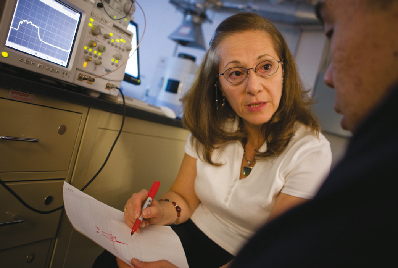Except for determining the fate of the occasional tennis star at the French open, clay is not a substance that elicits much reaction.
But to Sibel Pamukcu, reactions are exactly what makes clay a unique and powerful ally in environmental mitigation.
Pamukcu, professor of geotechnical engineering, has unearthed new ways to use the physical and chemical properties of clay and other soil components to enhance the natural processes that break down certain pollutants.
An expert in electrokinetics, or the use of electrical current to direct materials in solution, Pamukcu is developing a novel electrochemical approach to her research.
“We’re looking beyond the transporting of pollutants,” she says, “in an effort to transform pollutants, in situ, into their benign chemical components.”
When particles of clay interact with water molecules, says Pamukcu, a positive charge is transferred across the “electric double layer” that forms. This charge transfer enhances the chemical reactions that transform toxic substances into their benign or less toxic forms. and, because electrostatic forces cause most contaminants to reside on solid surfaces like individual clay particles, the result is a “soup of ions” that aids in environmental detox.
To demonstrate the theory, Pamukcu and her students applied a low-level electric field to saturated clay containing chromium Vi, reducing it to its less toxic form, chromium iii.
“Even without human intervention, clay’s characteristics serve to naturally promote pollutant sloughing or chemical breakdown,” says Pamukcu. “our goal is to strengthen this natural process through an environmentally conscious and economically feasible system that performs targeted treatment of contaminated subsurfaces with clay content.”

